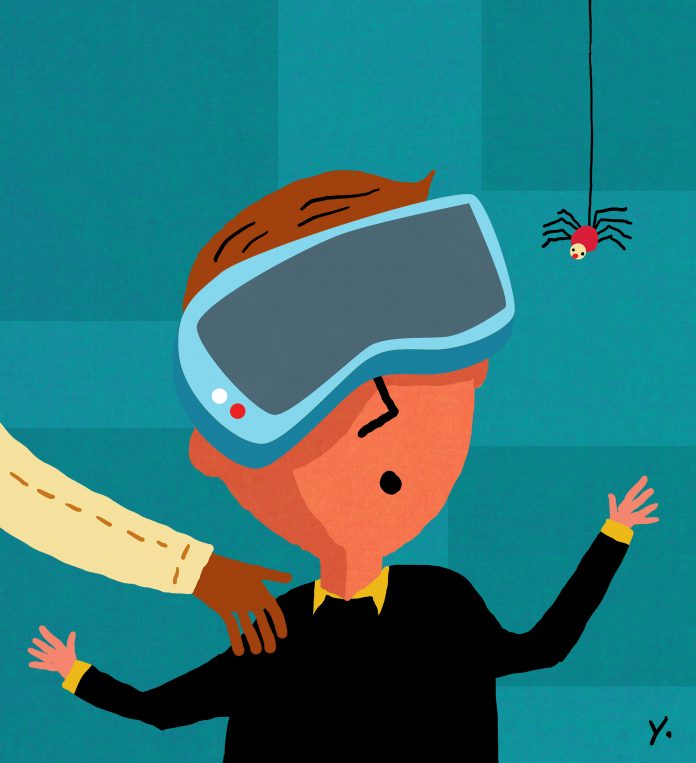
Virtual Reality Therapy: Conquering Phobias in Realistic Simulations
Embarking on a groundbreaking frontier, Virtual Reality Therapy (VRT) emerges as a powerful tool in overcoming phobias through realistic simulations. Let’s dive into the immersive world of VRT for phobias and explore how this technology is reshaping the landscape of therapeutic interventions.
An Immersive Therapeutic Journey
Virtual Reality Therapy for phobias offers a therapeutic journey like no other. Gone are the days of traditional exposure therapy; now, individuals can confront their fears in realistic virtual environments. This immersive approach provides a controlled and safe space for individuals to gradually face and overcome their phobias.
Realistic Simulations for Targeted Exposure
VRT leverages realistic simulations to expose individuals to their phobias in a controlled manner. Whether it’s fear of heights, flying, or spiders, the technology recreates scenarios that closely resemble real-life situations. This targeted exposure allows individuals to confront and manage their phobias in a gradual and systematic manner.
Customized Treatment Plans
One size doesn’t fit all in the realm of Virtual Reality Therapy for phobias. Therapists can tailor treatment plans to suit the specific needs and fears of each individual. This personalized approach ensures that the therapy aligns with the unique triggers and intensity levels associated with different phobias, enhancing the effectiveness of the intervention.
Enhanced Emotional Engagement
Traditional therapeutic methods sometimes struggle to evoke genuine emotional responses. VRT, on the other hand, taps into enhanced emotional engagement. By immersing individuals in realistic scenarios, the technology triggers authentic emotional reactions, allowing therapists to work with and address these emotions in a controlled and supportive environment.
Gradual Progress Monitoring
VRT facilitates gradual progress monitoring throughout the therapy journey. Therapists can track the individual’s reactions and progress in real-time, adapting the treatment plan as needed. This iterative approach ensures that individuals move through the therapy at their own pace, fostering a sense of control and empowerment.
Overcoming Geographic Barriers
One of the notable advantages of Virtual Reality Therapy is its ability to overcome geographic barriers. Individuals can access therapy sessions remotely, reducing the constraints of location and travel. This accessibility makes VRT a viable option for those who may not have access to specialized phobia treatment centers.
Combining VRT with Traditional Therapies
Virtual Reality Therapy doesn’t replace traditional therapeutic approaches; rather, it complements them. Integrating VRT with traditional therapies enhances the overall treatment experience. The combination of virtual exposure and in-person counseling creates a holistic and synergistic approach to phobia treatment.
Safe and Controlled Environment
VRT provides a safe and controlled environment for individuals to confront their phobias. The virtual setting allows therapists to carefully manage and customize exposure levels, ensuring that individuals feel supported and secure throughout the process. This controlled environment minimizes the risk of overwhelming emotional reactions.
Broad Range of Phobias Addressed
Virtual Reality Therapy is versatile in its application, addressing a broad range of phobias. Whether it’s fear of public speaking, social anxiety, or specific situational fears, VRT can be adapted to target various phobic triggers. This versatility expands the reach of phobia treatment, offering solutions for a diverse array of individuals.
Virtual Reality Therapy for Phobias: A Transformative Path to Healing
In the transformative landscape of mental health interventions, Virtual Reality Therapy for phobias stands as a beacon of hope. To explore the immersive world of VRT and its potential in conquering phobias, visit Virtual Reality Therapy for Phobias. Take the first step on a transformative path to healing and liberation from the constraints of fear.
